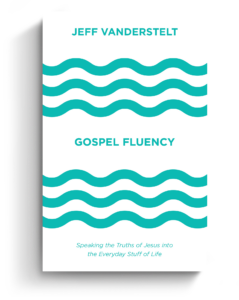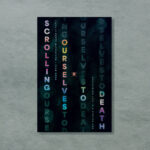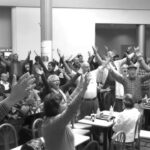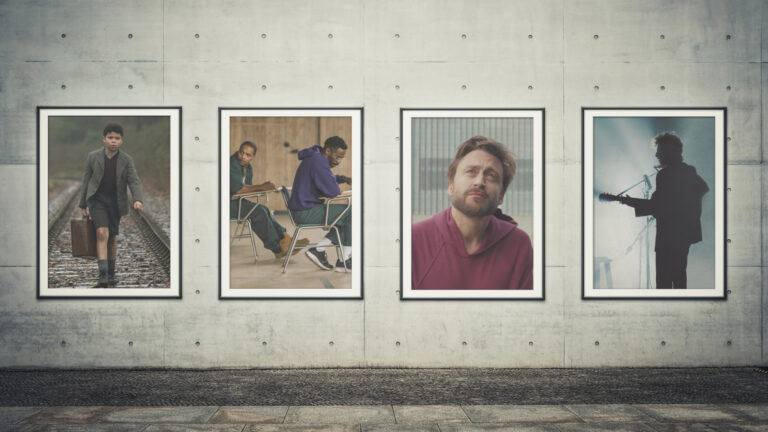The internet can be a depressing place. But every so often, it can be a catalyst for joy.
Case in point: the recent Paul McCartney “Carpool Karaoke” segment on The Late Late Show with James Corden.
Millions of viewers have watched it on YouTube already, and it’s likely to eventually become one of the most popular installments in a staggeringly popular series, which has featured everyone from Justin Bieber to Adele.
As one writer put it recently, “Few things on TV or the internet can generate as much pure joy as a solid Carpool Karaoke segment.”
Pure joy indeed. The 23-minute segment (watch it here) is a breath of fresh air in a media landscape dominated by never-ending cycles of rage and rant.
But there is something about the joy of this clip—which finds McCartney singing his old hits amid his old haunts in Liverpool—that is deeper than mere diversion. It’s a joy that is intertwined with sadness, nostalgia, and the ephemeral realities of life; a joy that is satisfying because it is unsatisfying; a joy that sparks in us that ineffable sense that, however beautiful the sunset, what we truly long for lies always beyond the horizon.
In My Ears and in My Eyes
What makes the segment so beautiful? In part, it’s McCartney. It’s the Beatles. It’s the ultimate singalong for a hyper-fragmented age, where we can hardly remember what it was like when everyone knew the same songs. In a world where so much divides us, where no two Spotify or Netflix libraries are the same, it’s a rare treat to find something that unites us in an experience of joy sparked by collective musical memories.
But it’s not just musical memory that resonates with us in this clip; it’s the way it captures memory generally, in all of its bittersweet complexity.
Throughout the clip, McCartney describes what he remembers about Liverpool, about the contexts of the songs. He points out the room in his childhood home where he wrote “She Loves You” with John Lennon, and recalls how the house inspired lyrics in later songs like “A Day in the Life.” Driving on the literal Penny Lane (while singing the song), he points out the church—St. Barnabas—where he was once a choir boy. He stops by the barbershop made famous by the song.
“Penny Lane is in my ears and in my eyes,” he sings. And while most of us don’t have Penny Lane (or any other Liverpool site) in our ears and eyes, we can relate to the way that places shape us and stay with us.
Our Best Havings Are Wantings
What are your Penny Lanes? The memories of places and times that evoke gratitude and nostalgia, but also longing?
For me it’s the creek behind my Oklahoma house where I played as a boy, the carnival sights and sounds at the Tulsa State Fair, or the excitement of a Friday night high-school football game on an autumn night.
Thinking of these childhood experiences brings me joy, not because I want to replicate them but because they cannot be. The joy is in the longing for these things, their irretrievability.
C. S. Lewis talked often about this kind of joy. In Surprised by Joy he describes it as “an unsatisfied desire which is itself more desirable than any other satisfaction,” and “a particular kind of unhappiness or grief”—the kind we actually want.
For Lewis, joy is akin to the German word sehnsucht. It is an “inconsolable longing” that is itself desirable. As opposed to pleasure or amusement, joy “emphasizes our pilgrim status; always reminds, beckons, awakens desire,” Lewis wrote. “Our best havings are wantings.”
The “Penny Lanes” for Lewis included the “green hills” of his Belfast childhood, which he could see from his nursery window, or a particular misty-morning hill walk of his adolescence, in which “it seemed to me that I had tasted heaven.”
The memories of these things were, for Lewis, as joyful as the experiences themselves, proving that “the very nature of Joy makes nonsense of our common distinction between having and wanting. There, to have is to want and to want is to have.”
When Art Sparks Sehnsucht
This somber-yet-desirable joy of longing—of feeling the world’s lack—is often sparked by experiences of the aesthetic. Whether because it stirs up memories or provides sensory glimpses of the ultimate Good, True, and Beautiful One for whom we were made, art is often a catalyst for sehnsucht. It can stir up the restlessness in our hearts that will not rest until it rests in God.
Art can stir up the restlessness in our hearts that will not rest until it rests in God.
Perhaps the moment we see this best in the ‘Carpool Karaoke’ episode is when McCartney describes the origins of the song “Let It Be.” It was a phrase that came to him in a dream, spoken by his late mother. Corden is emotional after singing the song, which sparks in him a memory of his grandfather.
“If my granddad were here right now he’d get an absolute kick out of this,” Corden says.
“He is,” McCartney says. And then there are a few moments of silence, before the chords of “Blackbird” start playing.
This is how art sparks joy. It reminds us of life’s impermanence and gestures at a connectedness between the past, present, and future that we instinctively resonate with, as creatures destined for eternity. It prompts in us a longing that feels like a having.
Another moment we feel this is when McCartney, 76, sits at a piano in his childhood home, playing “When I’m Sixty-Four”: When I get older losing my hair / Many years from now / Will you still be sending me a Valentine / Birthday greetings bottle of wine.
The “many years from now” line probably sounded a long way off to 25-year-old McCartney when he released the song. But like that, it was here and gone.
The power of music—and art generally—is that it can traverse time whimsically, whisking us backward in nostalgia and forward in hope, unsettling us and stirring up our longings for a more permanent Home.
The power of music—and art generally—is that it can traverse time whimsically, whisking us backward in nostalgia and forward in hope, unsettling us and stirring up our longings for a more permanent Home.
Secular Worship
Christian liturgy does this too, of course. The Lord’s Supper is also simultaneously past (remembrance), present (a sensory experience), and future (looking forward to the heavenly feast). Worship songs often evoke memory and expectancy, rehearsal and petition, simultaneously.
Watching the final scene of the ‘Carpool Karaoke’ episode, in which McCartney gives an impromptu mini concert in a Liverpool bar (singing Beatles classics like “A Hard Day’s Night” and “Ob-La-Di, Ob-La-Da”), I was struck by how much it looked like a religious service. As McCartney and Corden lead a rousing rendition of “Hey Jude,” the lifted hands and tearful faces in the crowd look like something out of a Hillsong concert. In our secular age, aesthetic experiences can take on liturgical forms, capturing longings and pangs of transcendence in movie theaters or concert halls, in the absence of cathedrals. Pews are replaced with bar tables; “Here I Am to Worship” is replaced with “Hey Jude.” They look similar because humans are worshiping creatures, wired to be stirred to reverence by the beauty of creation.
But they are not exactly the same. In the end, ‘Carpool Karaoke’ taps into spiritual longing, but for the purposes of commerce. The episode’s real purpose is to make the world aware of something they can buy: McCartney’s new album, Egypt Station. This too reflects the contours of our secular age—the intermingling of transcendence and materialism, spirituality and consumerism.
That McCartney’s ‘Carpool Karaoke’ episode is in large part a marketing stunt is no reason to dismiss it. On the contrary, Christians should take note of why something like this—joyfully longing, lovingly rendered, silly and serious and well done and melodic—resonates so widely.
In our worship practices and art making, we should be mindful of how hungry people are for experiences beyond the trifles of fleeting pleasures and digital distractions. They want to be entertained, yes—but they want something more. Something true. Something, or Some One, ultimate. And when art confronts us with those “something more” longings, it often feels like joy.
“The Most Practical and Engaging Book on Christian Living Apart from the Bible”
 “If you’re going to read just one book on Christian living and how the gospel can be applied in your life, let this be your book.”—Elisa dos Santos, Amazon reviewer.
“If you’re going to read just one book on Christian living and how the gospel can be applied in your life, let this be your book.”—Elisa dos Santos, Amazon reviewer.
In this book, seasoned church planter Jeff Vanderstelt argues that you need to become “gospel fluent”—to think about your life through the truth of the gospel and rehearse it to yourself and others.
We’re delighted to offer the Gospel Fluency: Speaking the Truths of Jesus into the Everyday Stuff of Life ebook (Crossway) to you for FREE today. Click this link to get instant access to a resource that will help you apply the gospel more confidently to every area of your life.

































